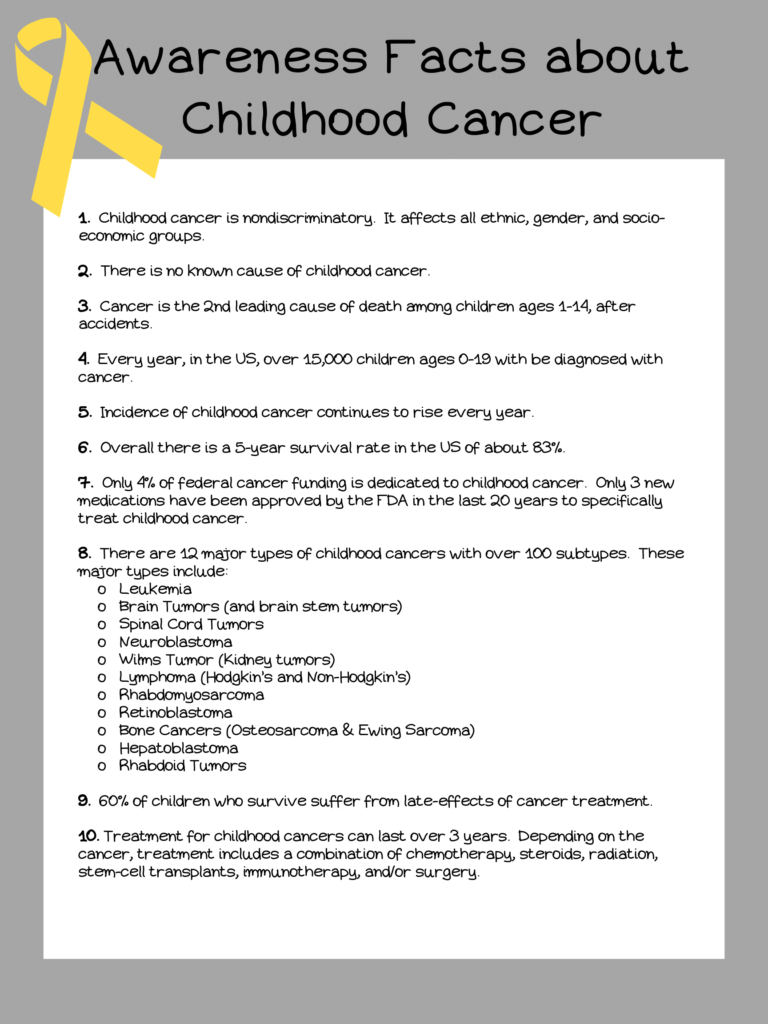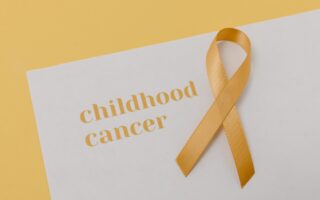We may earn money or products from the companies mentioned in this post.
(This post may contain affiliate links and I may earn a small commission when you click on the links at no additional cost to you.)
When my Batman was first diagnosed with cancer there was so much that I didn’t know. I had previously worked as a nurse in the Pediatric ICU and had interacted with many kids fighting childhood cancer. Even so, I didn’t know or understand many of the basic facts and statistics surrounding this group of diseases.
Suddenly, after Batman’s diagnosis, I wanted to learn everything I possible could. I was astonished by the numbers and the lack of common knowledge surrounding childhood cancer. So here are some basic facts that I think everyone should know.
10 Facts That You Should Know
1. Childhood cancer is nondiscriminatory. It affects all ethnic, gender, and socio-economic groups. It occurs at all ages although onset is most prevalent among preschoolers and adolescence.
2. There is no known cause of childhood cancer. Only 5-10% of childhood cancers are linked to an inherited genetic mutation. Generally, childhood cancer cannot be prevented or screened for.
3. Cancer is the 2nd leading cause of death among children ages 1-14, after accidents.
4. Every year, in the US, over 15,000 children ages 0-19 with be diagnosed with cancer. The average age of diagnosis is 8 years old overall (5 years for children 0-14 and 17 years for adolescences 15-19). Worldwide each year more than 300,000 children are diagnosed with cancer.
5. Incidence of childhood cancer continues to rise every year.
6. Overall there is a 5-year survival rate in the US of about 83%. This has increased greatly from 58% in the 1970’s. However, Survival rate varies greatly among the different types of cancer.
7. Only 4% of federal cancer funding is dedicated to childhood cancer. Only 3 new medications have been approved by the FDA in the last 20 years to specifically treat childhood cancer.
8. There are 12 major types of childhood cancers with over 100 subtypes. These major types include:

- Leukemia
- Brain Tumors (and brain stem tumors)
- Spinal Cord Tumors
- Neuroblastoma
- Wilms Tumor (Kidney tumors)
- Lymphoma (Hodgkin’s and Non-Hodgkin’s)
- Rhabdomyosarcoma
- Retinoblastoma
- Bone Cancers (Osteosarcoma & Ewing Sarcoma)
- Hepatoblastoma
- Rhabdoid Tumors
9. 60% of children who survive suffer from late-effects of cancer treatment. These effects can be long-term medical, psychosocial, and/or neurocognitive problems. Late effects can occur months or years after treatment has ended. (infertility, heart failure, secondary cancers.
10. Treatment for childhood cancers can last over 3 years. Depending on the cancer, treatment includes a combination of chemotherapy, steroids, radiation, stem-cell transplants, immunotherapy, and/or surgery.
Childhood cancer affects more than just the child. It affects us all!




